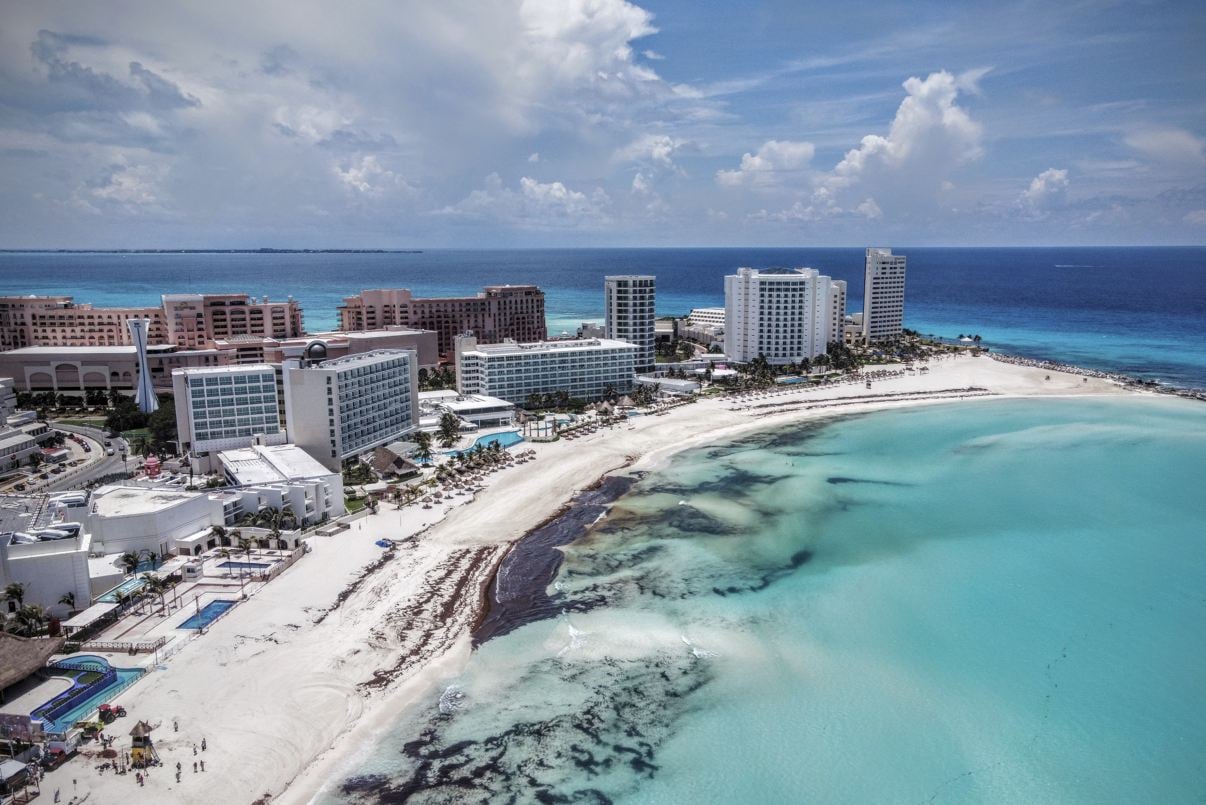Share the article
Get ready for a potentially messy summer on some of your favorite beaches. Scientists say that the amount of seaweed that floats in the Tropical Atlantic Ocean and the Caribbean Sea has been a record high in April, and that can mean a considerable Sargassum season for places such as Florida and Cancun.
Sargassum is a brown seaweed that floats on the ocean surface in large mats and can sometimes wash in massive quantities, which influences unspoilt beaches and vacation plans.

Record -breaking seaweed levels
New data from the University of South -Florida’s Optical Oceanography Lab (OOL) has unveiled a number of pretty amazing figures. According to their monitoring, The Sargassum Bloom in April was no less than 40% larger than the previous record in June 2022. To put that in perspective, we are talking about 30 million tonnes of the brown macro algae that are currently rotating. Dr. Chuanmin Hu, a professor in the Oceanography at USF, just described it as ‘huge’, and emphasized how much higher this year’s levels are compared with earlier records.


What does this mean for beaches?
If you have been on the beaches in South Florida or Cancun in recent years, you have probably seen or even robes through mats from Sargassum. Although some seaweed is a natural part of the ocean ecosystem, these massive flowers can cause large headaches. The Bulletin of April of the OOL suggests that, just like in previous years, the amount of Sargassum is expected to continue to grow in May in most of the Caribbean Sea and the Gulf of Mexico.


When can we see it?
Exactly predicting when the seaweed will hit the beach is difficult. There are just so many factors that influence his movement and growth. For now, Dr. says Hu that the majority of the Sargassum is still quite far away. Although there is a moderate quantity in the Western Caribbean Sea, it can take a month or even longer before Florida. So although the record levels are worrying, a huge influx may not be immediately.


Insight into the seaweed: what to expect on your beach trip
Scientists are still merging why we see so much more Sargassum, but it comes down to the seaweed loving sunshine and nutrients in the water. Stronger wind can bring more of this ‘food’ to the surface, and warmer oceaning temperatures work like a greenhouse, making it grow faster. What this means for your journey: Be prepared for the possibility of more seaweed on the beaches than you may have seen in the past. This can vary from scattered places to significant accumulations, which may affect your ability to walk freely on the sand and to swim in the clear water. Check recent reports from the beach conditions online or ask your hotel for the latest updates before you go to the day.


Climate change and your future beach holidays: plan ahead
The increasing prevalence of large Sargassum flowers can be linked to broader climate changes, in particular warmer ocean temperatures. Unfortunately, this could mean that significant seaweed events will occur more often in the future.
What this means for your travel schedule: For this trip and future it is wise to be flexible. Consider booking accommodations with good swimming pool facilities as an alternative to the beach on heavy seaweed days. Look at resorts or areas that are known for more proactive efforts for seaweed management. If your travel dates are flexible, you can even consider traveling during months that historically see less Sargassum.


Dealing with Sargassum: Get the most out of your beach time
Although Sargassum plays a small role in the health of the ocean, large quantities on the beach can be annoying. Expect it to be brown and possibly has a noticeable odor when it dissects. Walking thick piles can be difficult and swimming can be less pleasant. Local authorities often work hard to clean the beaches, but this can sometimes entail heavy machines and temporarily limit access to certain areas.
What this means for your beach life: Tackle fitting footwear if you plan to walk on the beach. Be patient with clean -up efforts and consider spending time in the swimming pool or exploring other local attractions on days with heavy seaweed. Contact your hotel about their beach cleaning schedule and if they offer facilities or services to help guests by navigating the Sargassum.


So, although the idea of record-breaking seaweed ashore in Florida and Cancun may not be the souvenir where you hoped for, this is the reality of the Sargassum season of 2025. By staying informed, being flexible with your beach plans and the constant efforts to manage this natural phenomenon. Keep an eye on local reports, pack your sandals and remember that even with a little extra seaweed, the sun, the sand and the sea still have their unmistakable attraction.
To play safely for clearer waters and unspoilt beaches, aimed at traveling from November to early spring (approximately November to March), it traditionally offers a greater chance of avoiding important Sargassum flowers in Florida and Cancun.
Ready for your trip? Check the latest input requirements for your destination here


✈️Become a member of our Travel Off Path Community Forum: Where travelers unite, ask questions, share experiences and even find like -minded travel buddies!
Subscribe to our latest messages
Enter your e -mail address to subscribe to the latest Breeknieuws from Path, directly to your inbox.
This article originally appeared on Traveloffpath.com
Opinions here are only the author, not those of a bank, credit card emitting, hotel, airline or other entity. This content has not been assessed, approved or otherwise approved by one of the entities that are included in the post.





